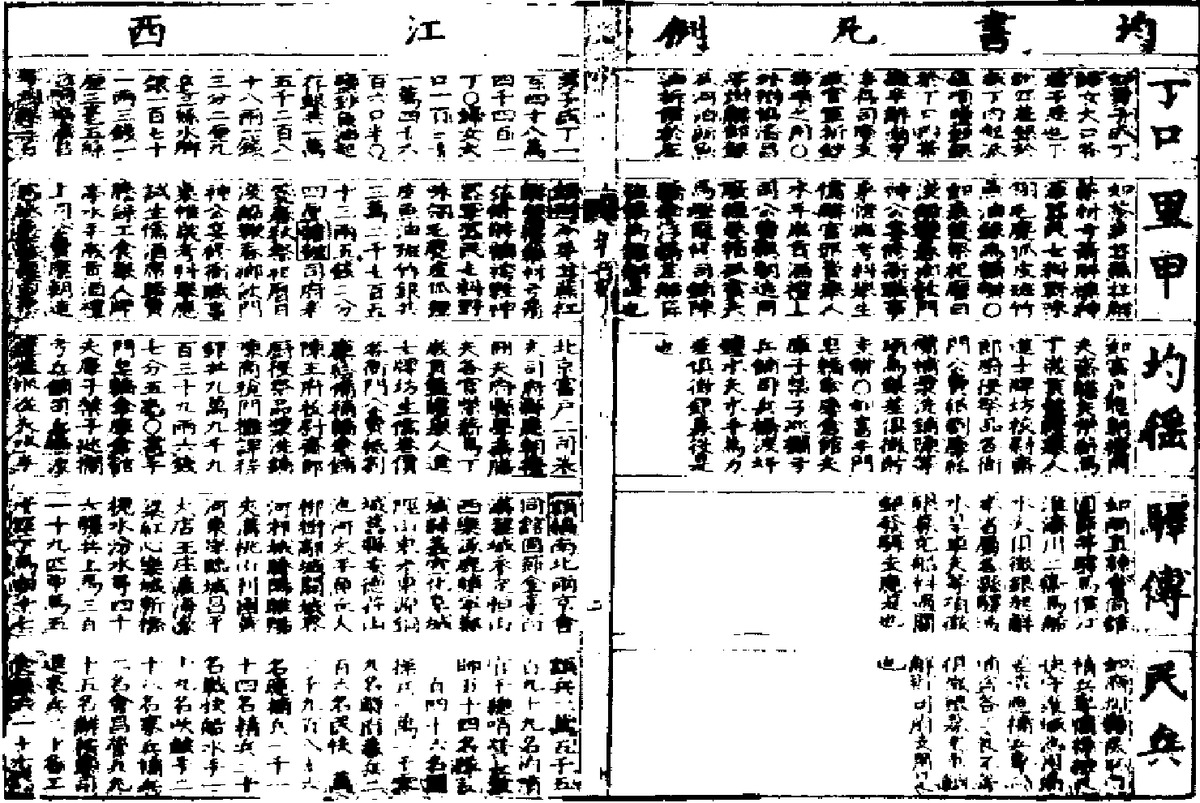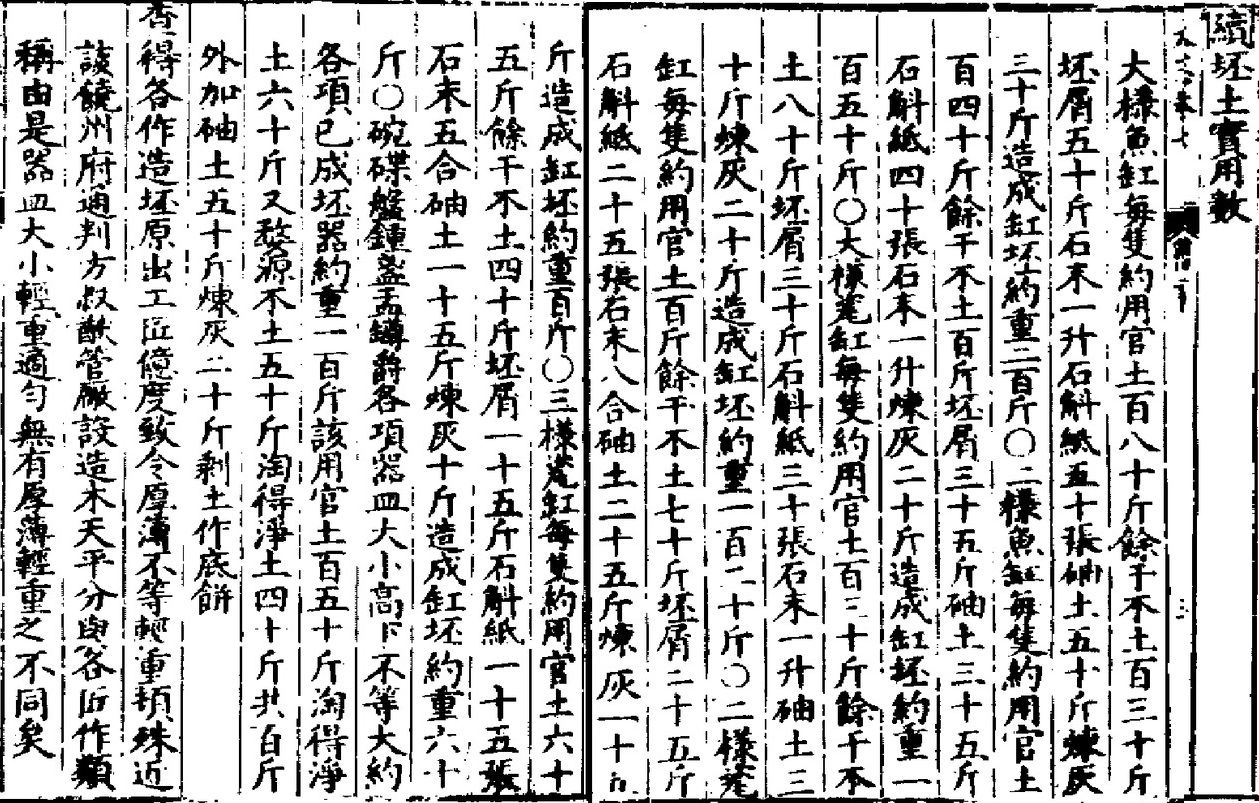(Wanli) Jiangxi sheng dazhi (萬曆)江西省大志, also called Jiangxi dazhi 江西大志, is a local gazetteer on the province of Jiangxi which is particularly interesting for its chapters on the porcelain industry (7 Taoshu 陶書) and the paper industry (9 Chushu 楮書). The book was written by Wang Zongmu 王宗沐 (1523-1591), courtesy name Xinfu 新甫, style Jingsuo 敬所, and supplemented by Lu Wangai 陸萬垓 (1533-1599). Wang is better known for his history book Song-Yuan zizhi tongjian 宋元資治通鑑 and the book Yuan haiyun zhi 元海運志 on the sea transport of tribute grain during the Yuan period 元 (1279-1368).
The gazetteer of 8 juan length was finished in 1556. It is not organised according to traditional modes ranging from astronomy and geography to statecraft and biographies, but according to economic themes.
 |
Local rules for tax-liable household heads (dingkou 丁口), to participate in rural self-administration (lijia 里甲), corvée labour (junyao 均徭), service in courier stations (yichuan 驛傳), and local militia (minbing 民兵). |
 |
Components required for large fish basins (dayang yugang 大樣魚缸) and other types of pottery. |
| 1 | 賦書 | Tax |
| 2 | 均書 | Equalized [corvée duties] |
| 3 | 藩書 | Princedoms |
| 4 | 溉書 | Irrigation and river conservancy |
| 5 | 實書 | Military units and agro-colonies |
| 6 | 險書 | Strategic places |
| 7 | 陶書 | Porcelain industry |
| 8 | 楮書 | Paper industry |
The Nanjing Library 南京圖書館 owns a print from 1592. A facsimile of the book was published during the Republican period. A modern edition by the Zhonghua Shuju 中華書局 is dated 2018.
The chapter on porcelain is divided into 13 sections that give an overview of the history of the industry (Jianzhi 建置), supply for the imperial court (Yugong 御供), raw materials like kaolin (Shatu 砂土), personnel (Renfu 人夫), supervision of work by state officials (Sheguan 設官), "Central-Asian blue" (Huiqing 回青), the construction and organisation of kilns (Yaozhi 窰制), supply (Gongyi 供億), craftsmen (Jiangyi 匠役), the process of producing the sherd (Zaopi gongcheng 造坯工程), fuel (Chailiao 柴料), colours (Yanse 顏色), shipping (Jieyun 解運), and prices of material and tools.
In particular, the section on Central-Asian blue is quite detailed, not only in terms of the place of origin, types and classes of quality, firing and production methods but also in terms of the proportions of the three types of material used in conjunction with the stone-green material (shiqing liao 石青料). The section on supply for the court lists the number of pieces of chinaware to be delivered to the imperial court. The chapter provides valuable information on the porcelain industry in the late Ming period 明 (1368-1644).
The eighth chapter on paper making was added by Lu Wanguai, with a detailed, illustrated account of the development of the paper-making industry in Yanshan 鉛山. The chapter is divided into sections on the history of the trade (Jianzhi 建置), the craftsmen (Jiangyi 匠役), state officials supervising (Weiguan 委官), the "trough system" (Zaozhi 槽制; number and distribution of workshops), materials (Cailiao 材料), colours (Yanse 顔色), the price of materials (Liaojia 料價), the shipping of materials and products (Jieyun 解運), and their use by the imperial court and the provincial government (Yuyong 御用, Bensheng 本省). Lu's chapter thus informs readers about all matters of the Xinzhou 信州 paper industry.